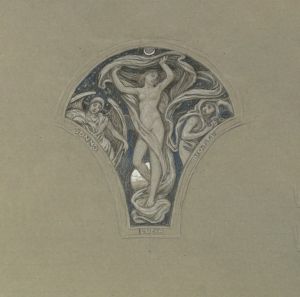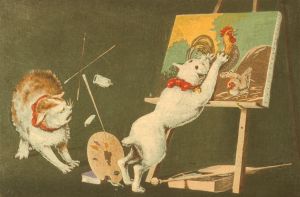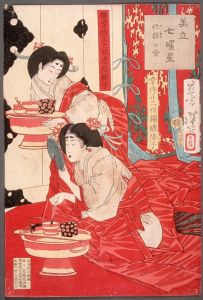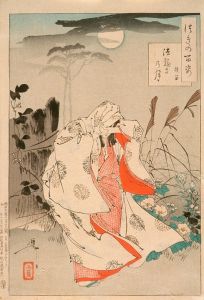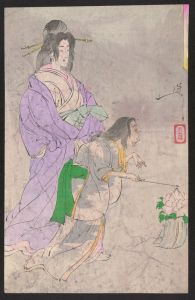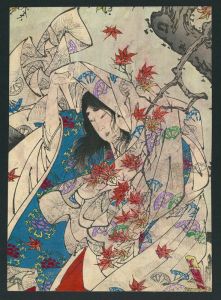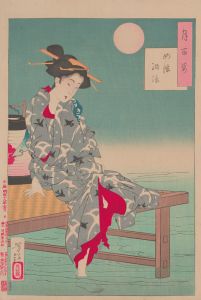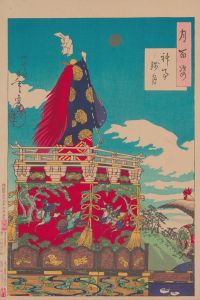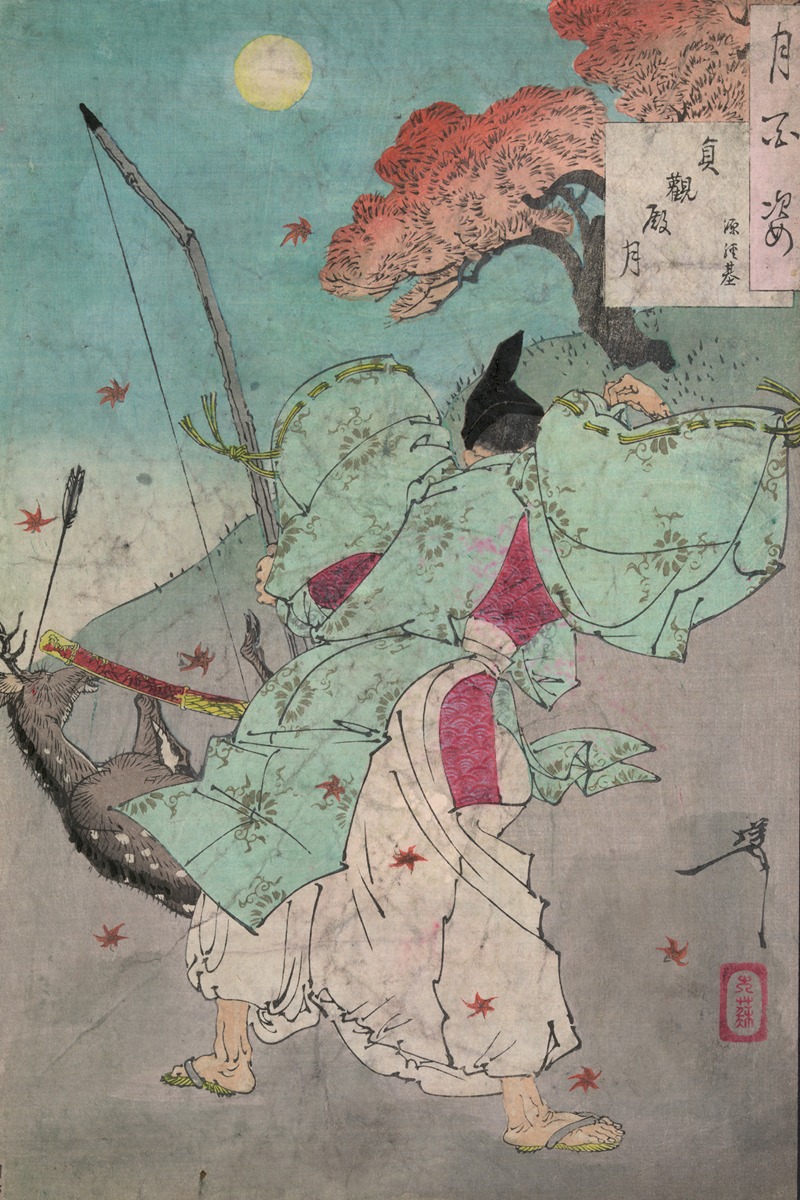
Jōganden no tsuki
A hand-painted replica of Tsukioka Yoshitoshi’s masterpiece Jōganden no tsuki, meticulously crafted by professional artists to capture the true essence of the original. Each piece is created with museum-quality canvas and rare mineral pigments, carefully painted by experienced artists with delicate brushstrokes and rich, layered colors to perfectly recreate the texture of the original artwork. Unlike machine-printed reproductions, this hand-painted version brings the painting to life, infused with the artist’s emotions and skill in every stroke. Whether for personal collection or home decoration, it instantly elevates the artistic atmosphere of any space.
"Jōganden no tsuki" is a woodblock print by the renowned Japanese artist Tsukioka Yoshitoshi, part of his celebrated series "One Hundred Aspects of the Moon" (Tsuki hyakushi). Yoshitoshi, a master of the ukiyo-e genre, is known for his innovative approach to traditional Japanese woodblock printing, and this series is considered one of his masterpieces. The series was published between 1885 and 1892, during the Meiji era, a time of significant cultural and political change in Japan.
The print "Jōganden no tsuki" translates to "Moon at Jōganden," and it is inspired by historical and literary themes, a common characteristic of Yoshitoshi's work. The Jōganden was a palace in the Heian period, associated with Emperor Yozei, who reigned from 876 to 884. Yoshitoshi often drew upon historical and legendary figures, blending them with elements of nature, particularly the moon, which serves as a unifying motif throughout the series.
In "Jōganden no tsuki," Yoshitoshi captures a scene that evokes a sense of nostalgia and reflection, typical of the Heian period's aesthetic values. The print likely depicts a moment of quiet contemplation, with the moon serving as a symbol of beauty and transience. Yoshitoshi's use of color, line, and composition in this work exemplifies his ability to convey emotion and narrative through visual art.
Yoshitoshi's "One Hundred Aspects of the Moon" series was created during a time when Japan was opening up to Western influences, and traditional art forms were being challenged by new ideas and technologies. Despite these changes, Yoshitoshi remained committed to the ukiyo-e tradition, while also incorporating new techniques and perspectives. His work is noted for its dynamic compositions, expressive figures, and the innovative use of color and shading.
The series, including "Jōganden no tsuki," reflects Yoshitoshi's deep appreciation for Japan's cultural heritage, as well as his personal struggles and artistic evolution. By the time he created this series, Yoshitoshi had experienced both critical acclaim and personal hardship, including periods of mental illness. These experiences informed his work, imbuing it with a depth of emotion and a sense of introspection.
"Jōganden no tsuki" and the other prints in the series were well-received and have since been regarded as some of Yoshitoshi's finest work. They represent a culmination of his artistic career, showcasing his mastery of the woodblock print medium and his ability to blend traditional Japanese themes with a modern sensibility.
Today, Yoshitoshi's prints are highly valued by collectors and are considered important cultural artifacts. They offer insight into the Meiji era's complex interplay between tradition and modernity, as well as the enduring appeal of classical Japanese art forms. "Jōganden no tsuki," like many of Yoshitoshi's works, continues to be studied and admired for its artistic and historical significance.





